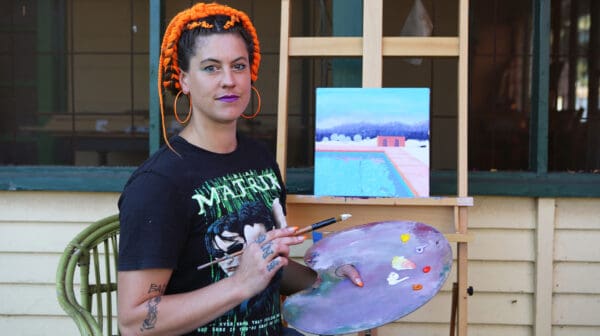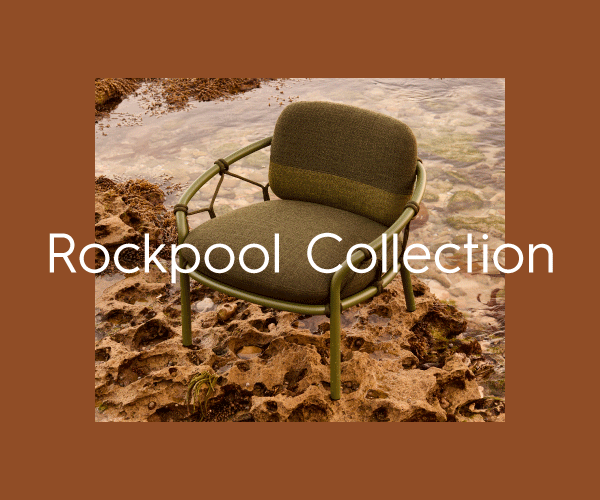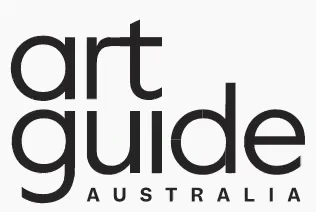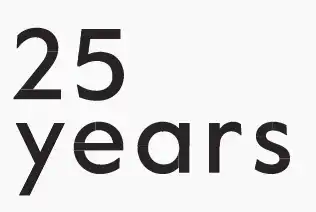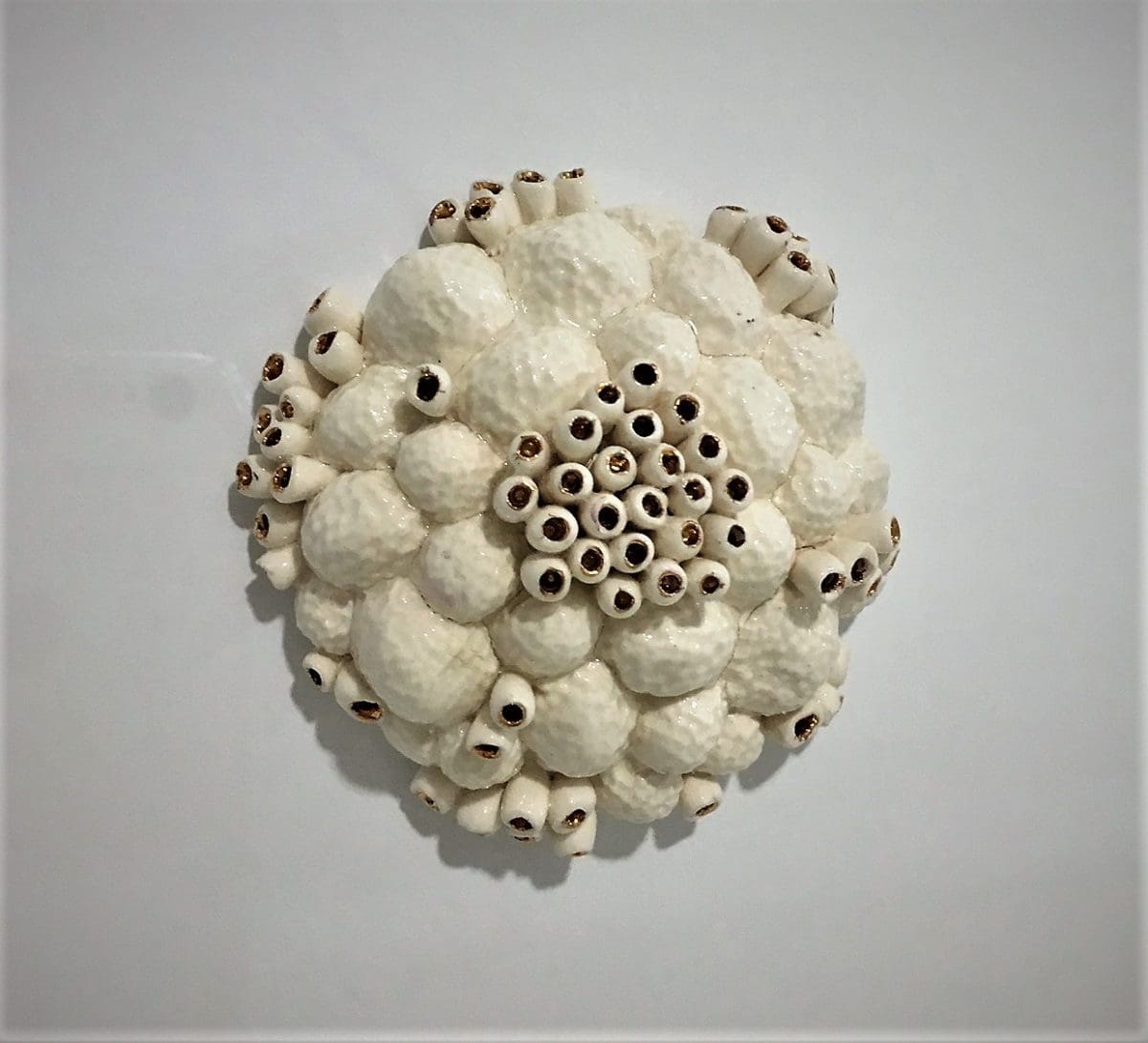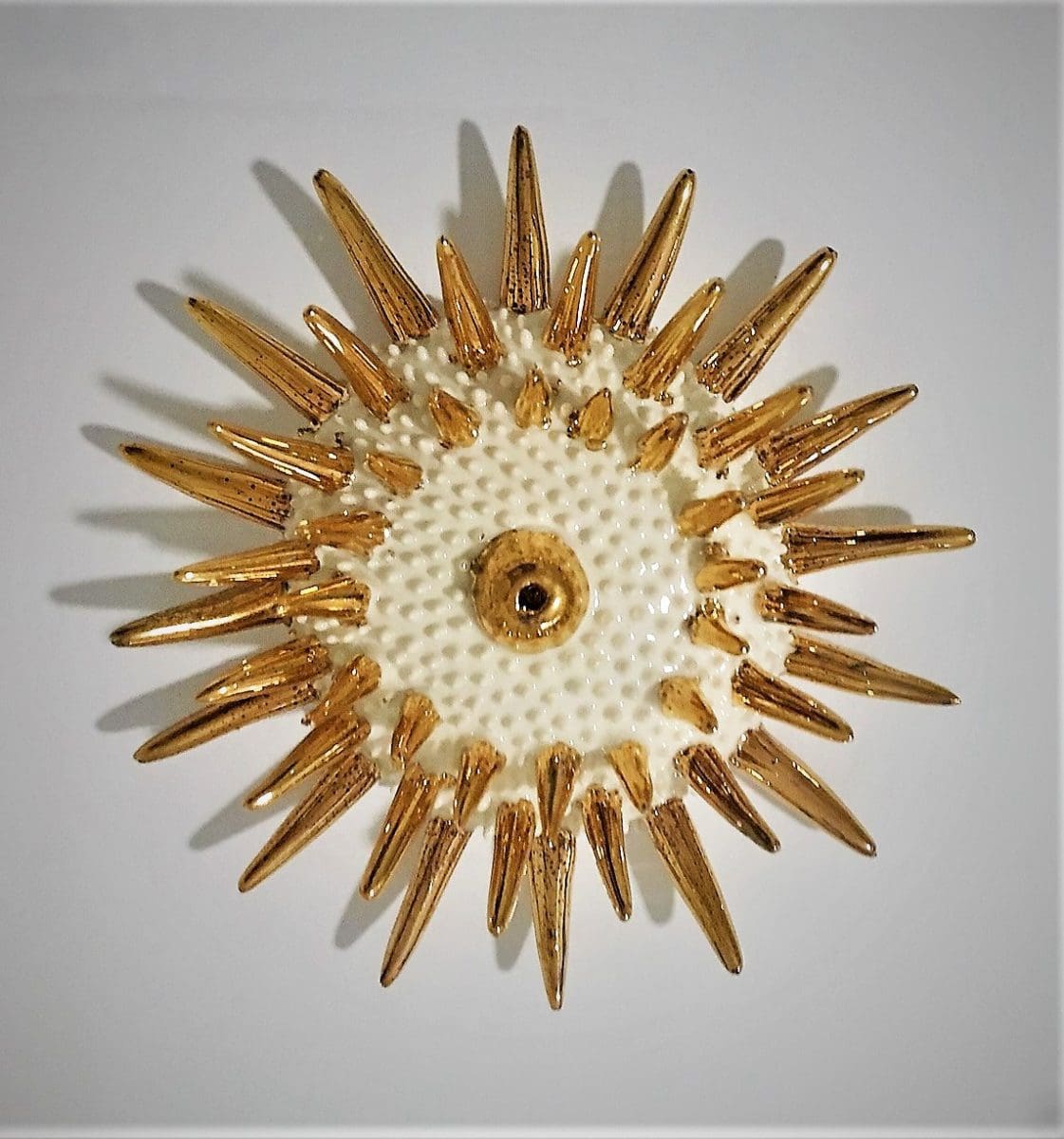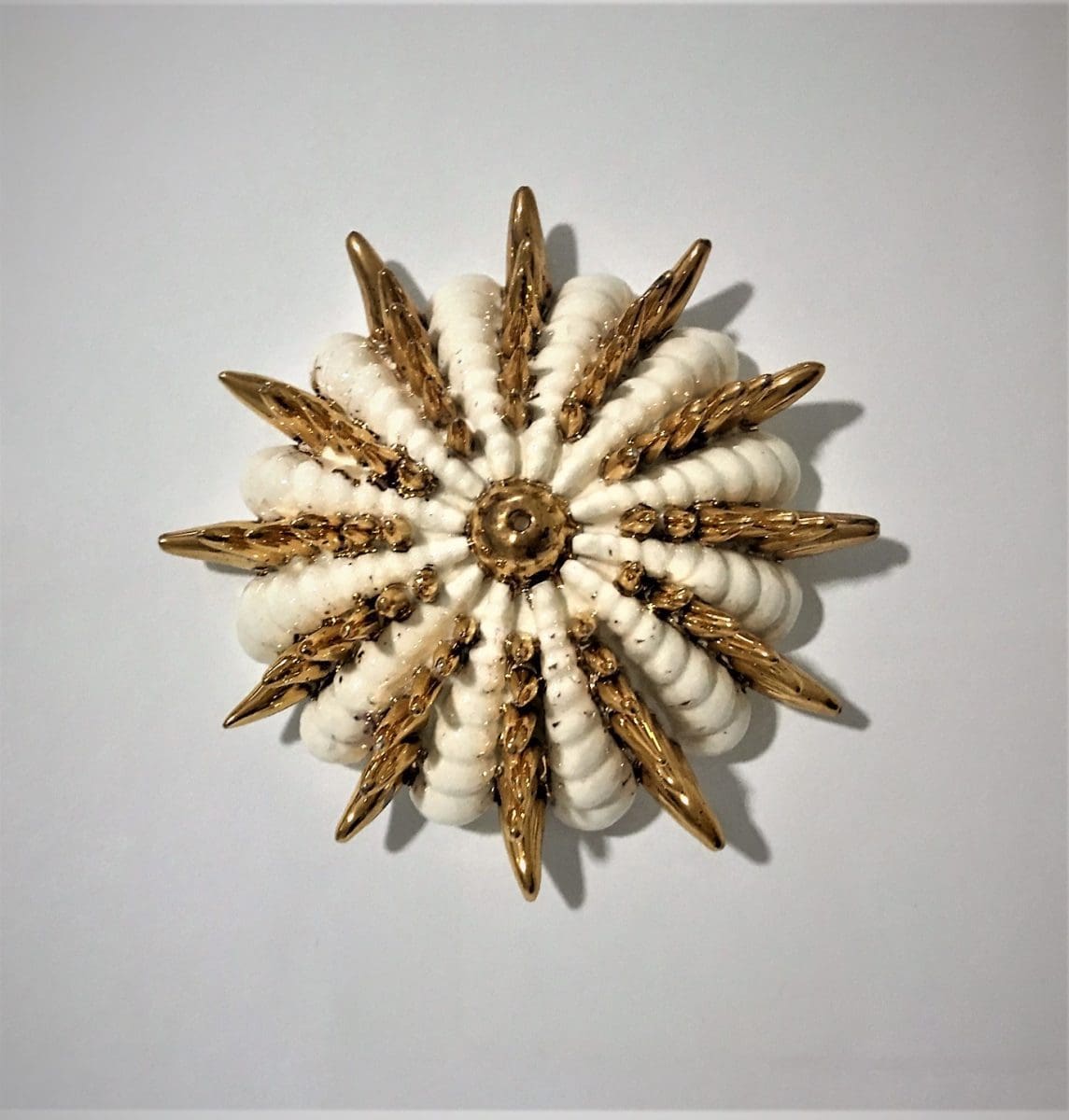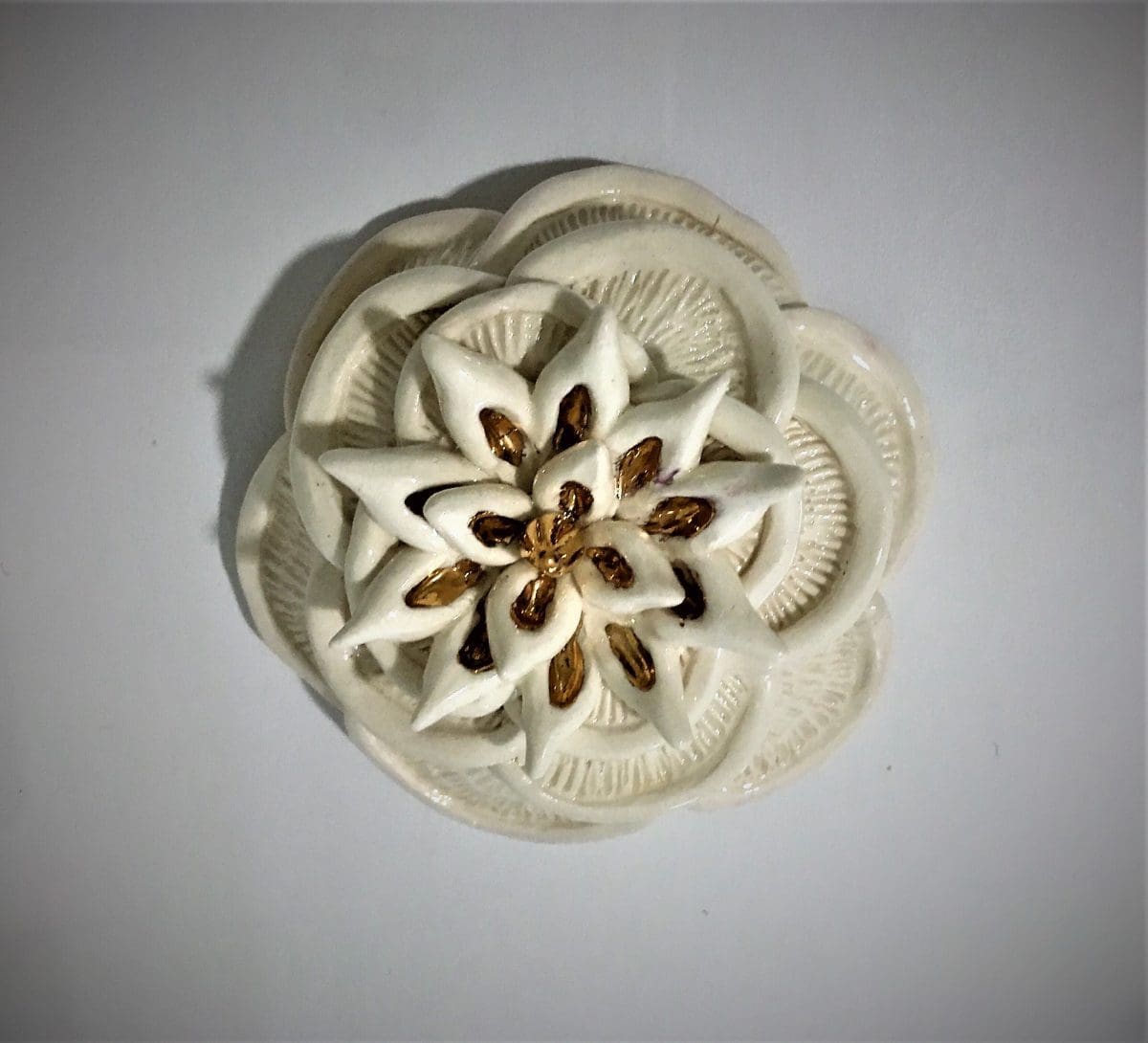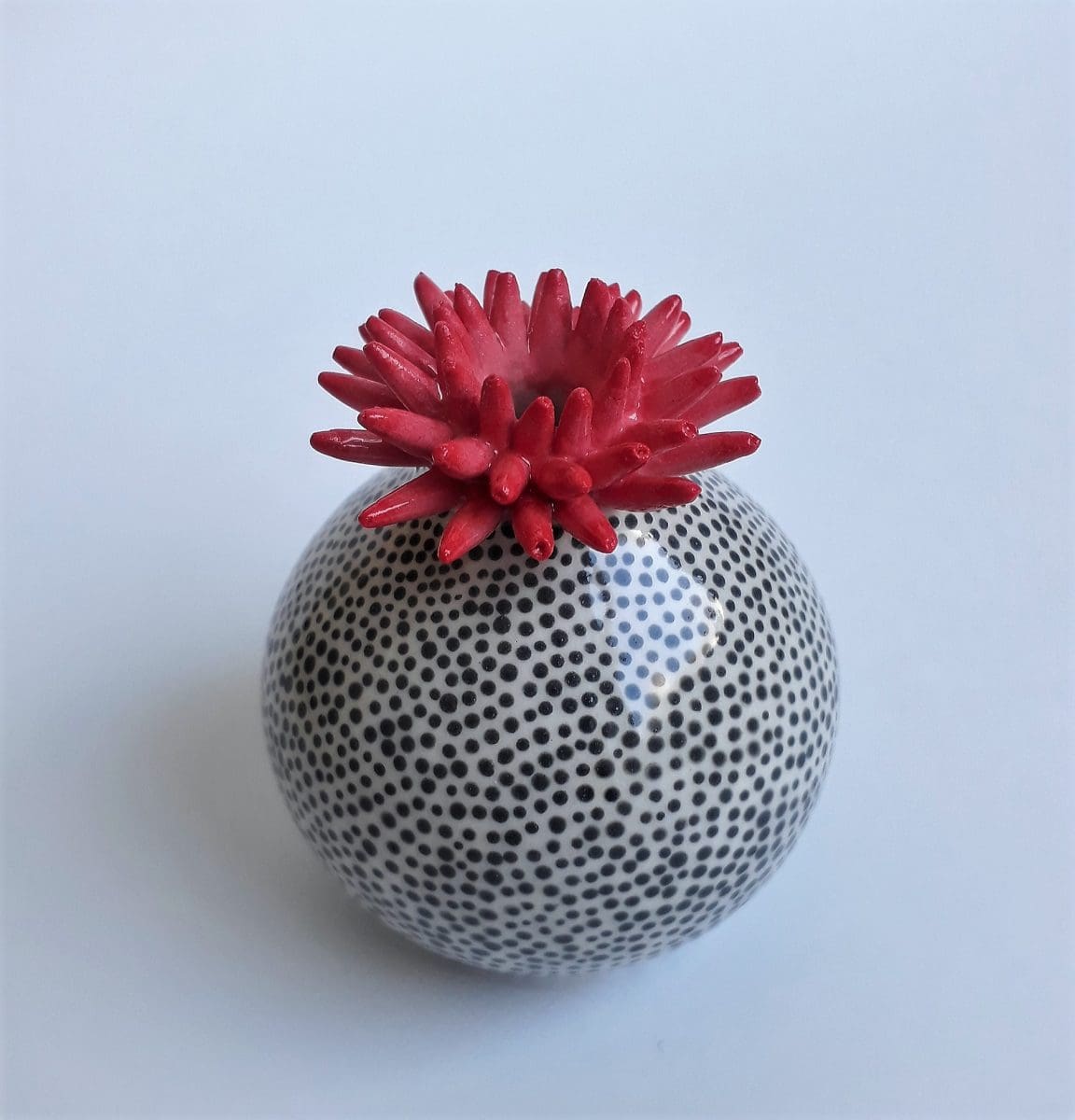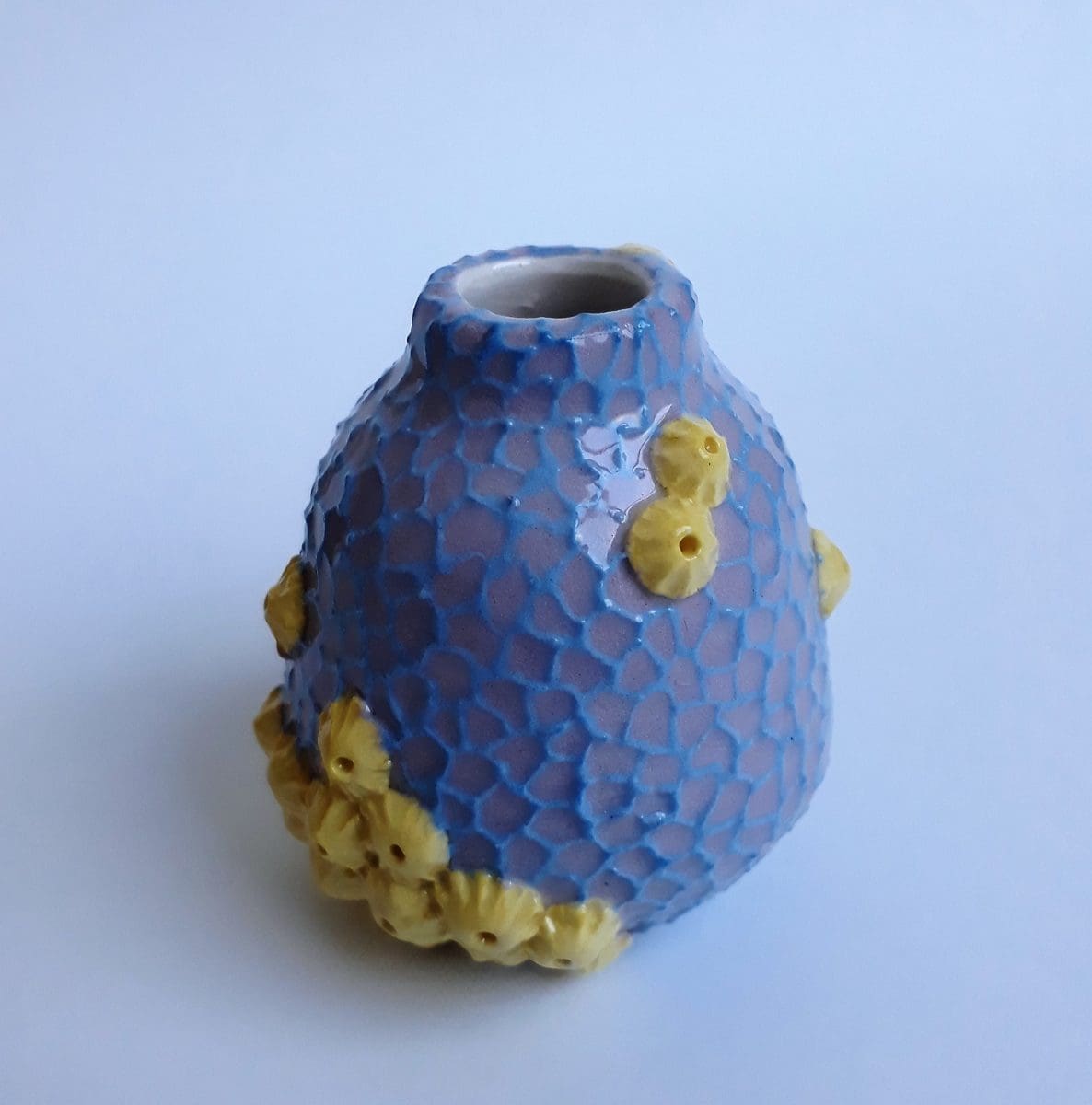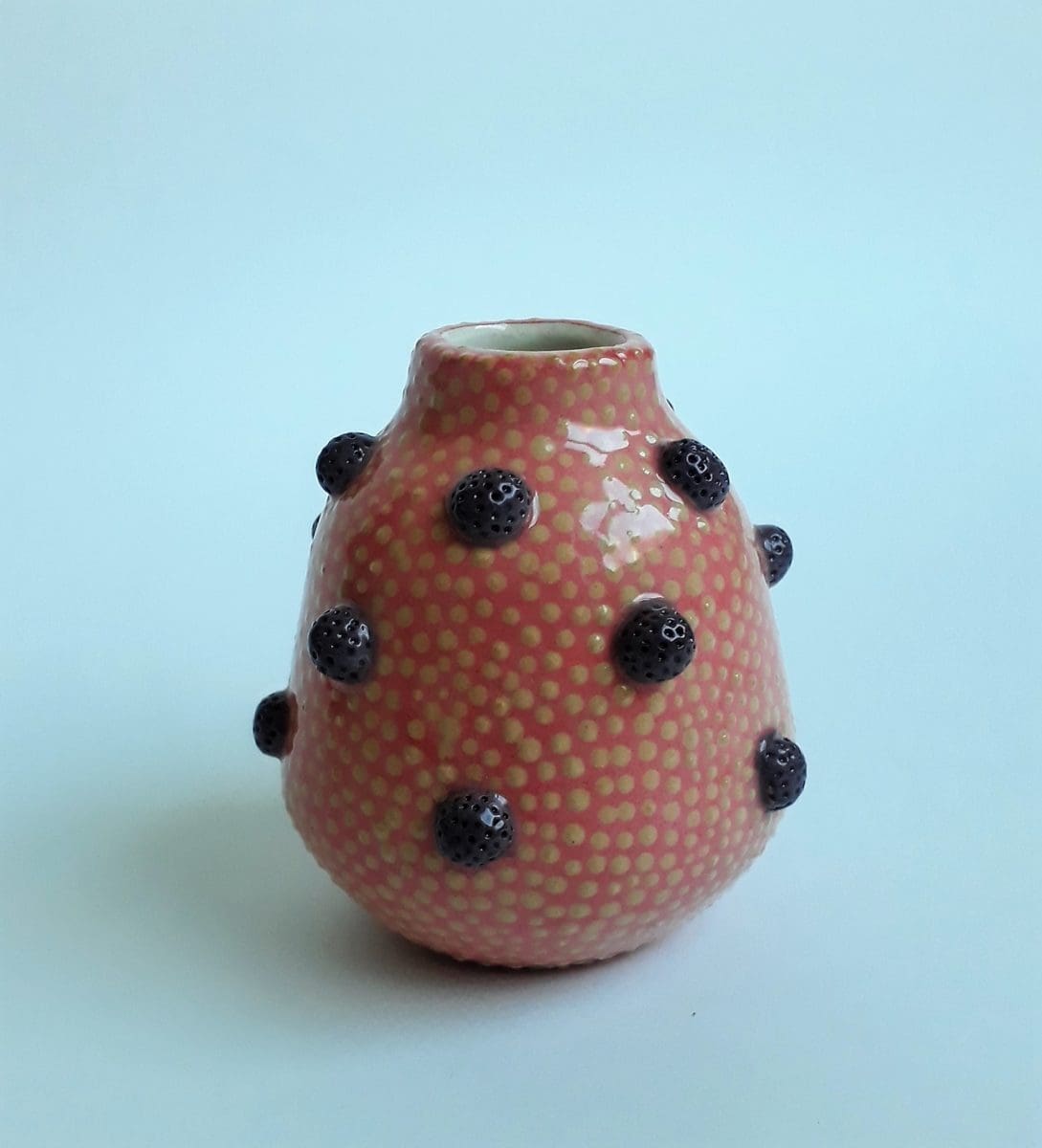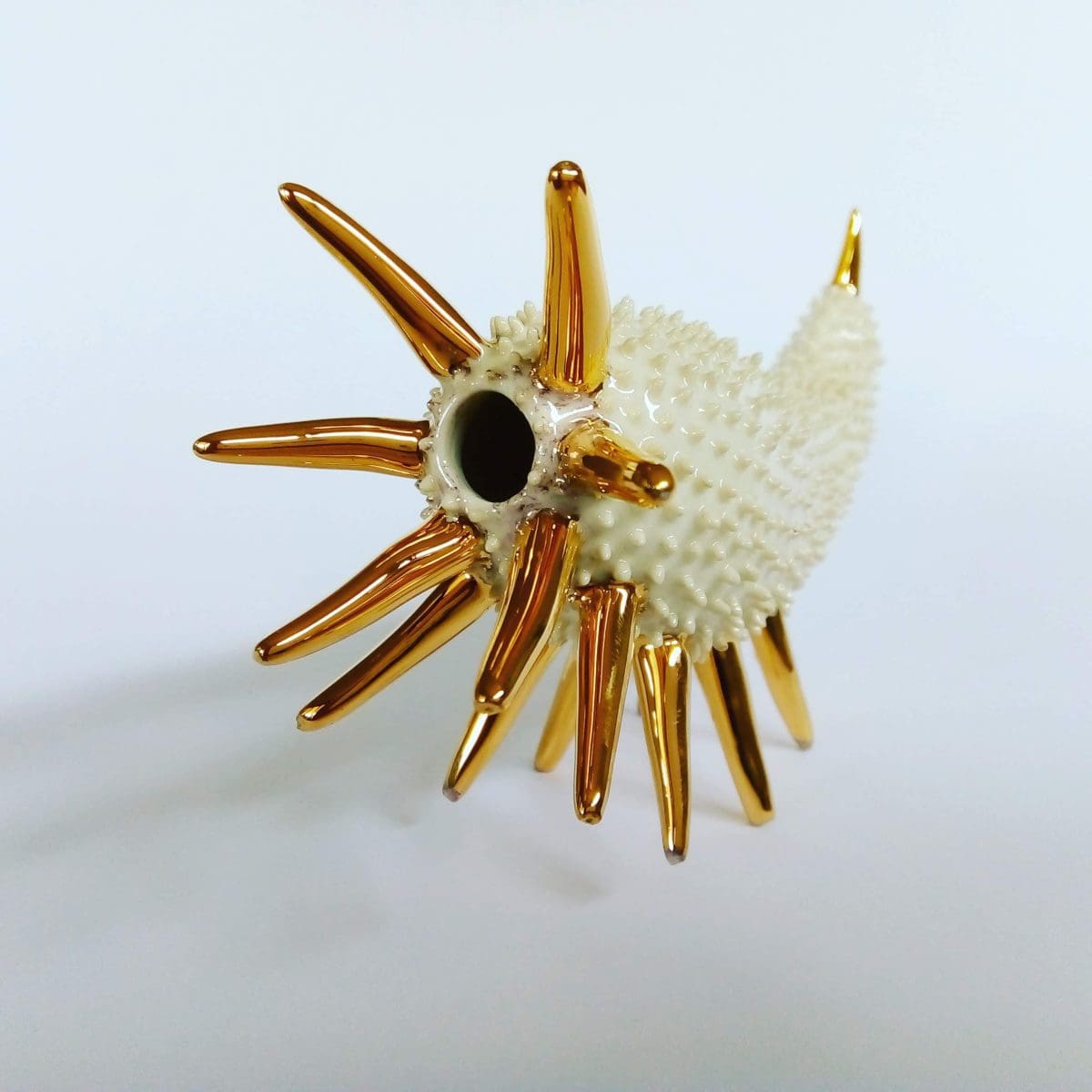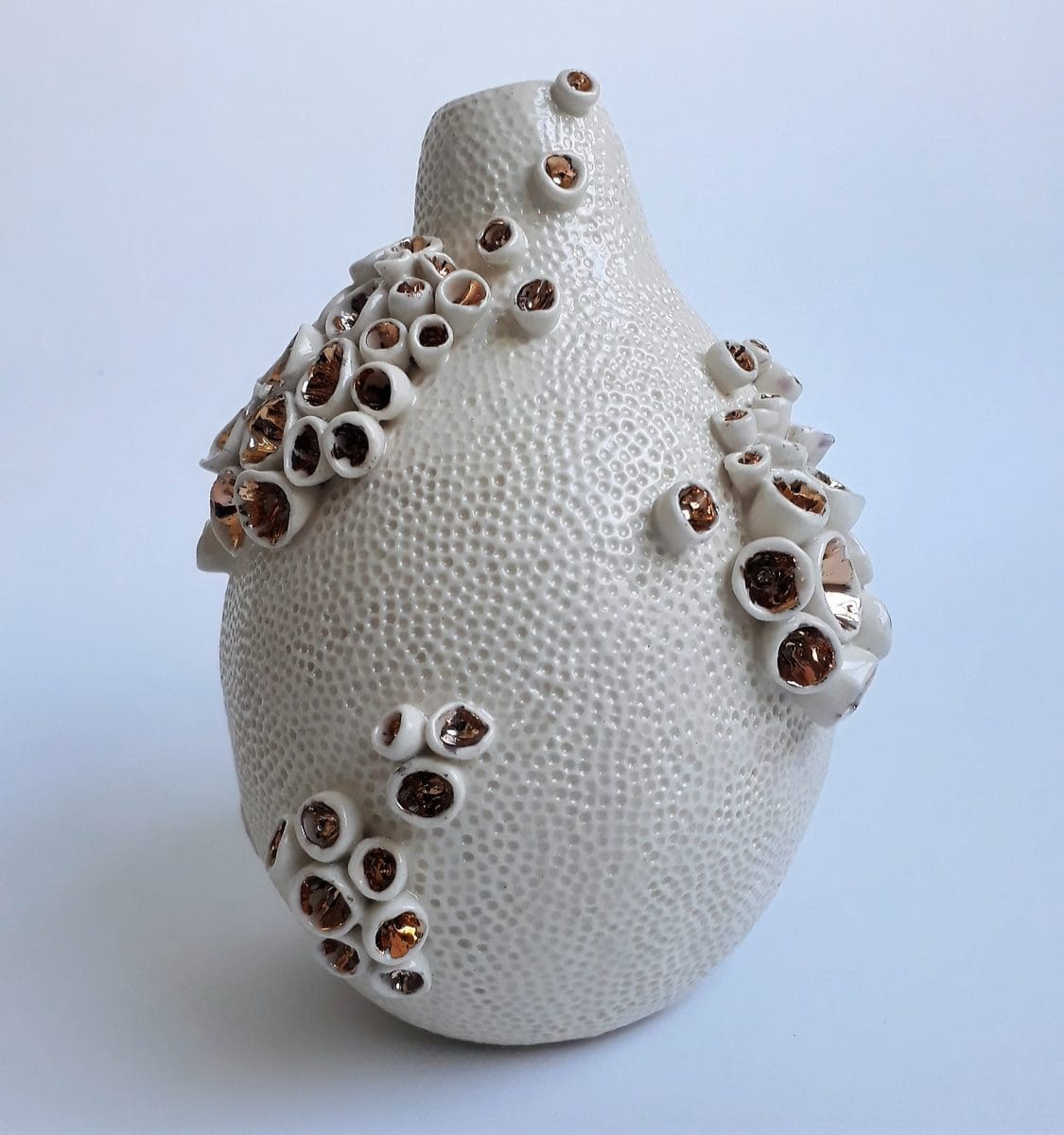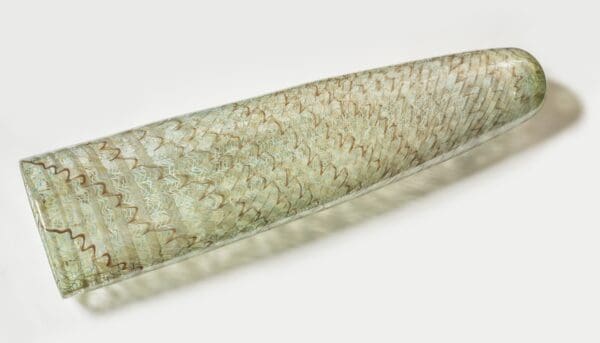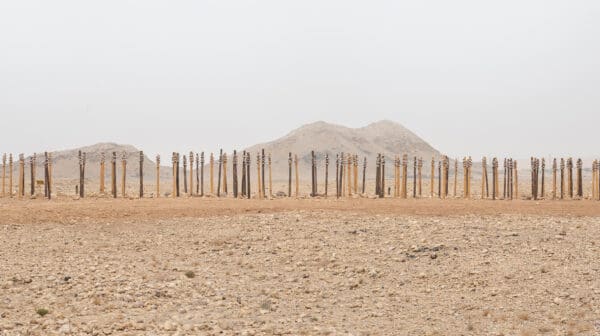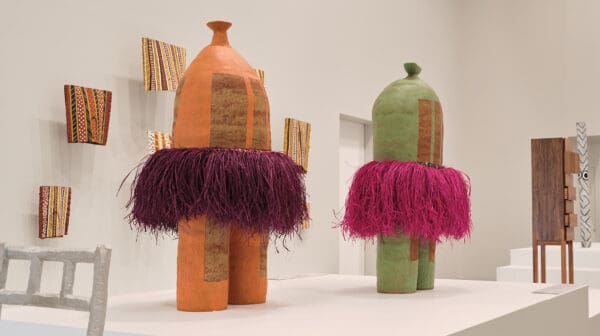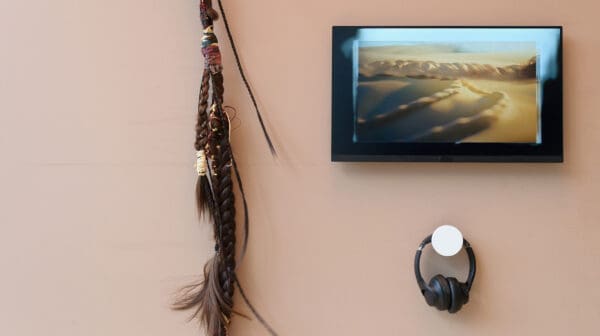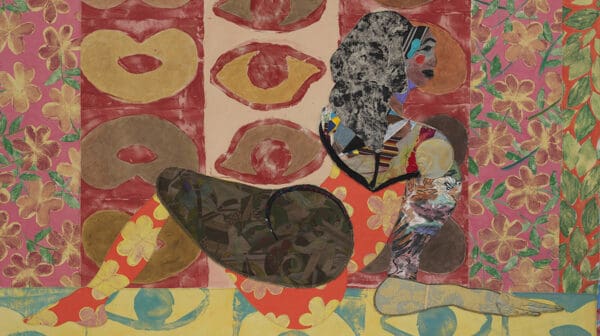Born in 1834, German biologist Ernst Haeckel was known for his meticulously detailed drawings of marine life. Despite using real specimens to draw from, Haeckel’s illustrations appear quite implausable with their spikes and swirling tendrils.
Ceramic artist Mirjana Dobson is deeply inspired by Haeckel’s drawings and her work mimics the organic forms of ocean plants and animals, particularly those found in coral reefs. Dobson’s bulbous and tubular forms, based on flamboyant sea cucumbers and anemones, are embellished with gold and highlight the precious nature of ocean ecology. “We treasure gold as a commodity, as something extremely valuable because it is rare and finite,”
Dobson explains. “By fusing organic forms with this precious metal, I want to draw attention to the richness of our natural world by expressing that nature is also finite.”
In a departure from the vibrant colours Dobson usually incorporates into her ceramic vessels, this body of work has a minimal palette of white and beige to evoke the hues of bleached coral. Alongside the specimen-like forms are a small collection of wall-mounted works, each containing a delicate sculpture referencing the tiny, soft-bodied creatures found in Haeckel’s richly illustrated Radiolarian Atlas of 1862.
“Haeckel’s life’s purpose was to acquaint the general public with animals and plants within the ocean,” Dobson says. “Now, over a century later, the Great Barrier Reef is the first of all vast ecological systems where you can clearly see the effects of climate change. Through my work I hope to reconnect the public with the beauty of the reef and all its lifeforms.”
Mirjana Dobson
Oecologia
Hill Smith Gallery
2 May — 25 May
This article was originally published in the May/June 2019 print edition of Art Guide Australia.
